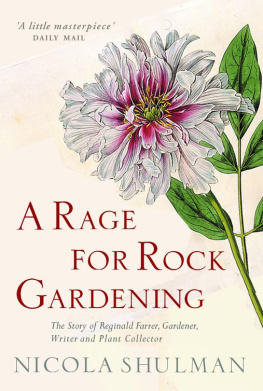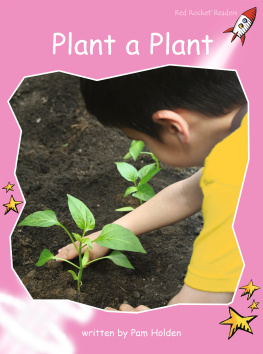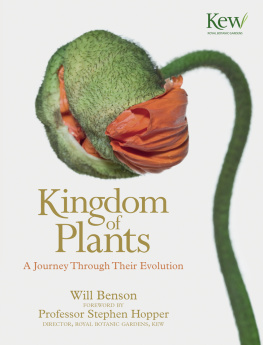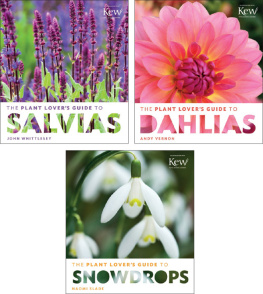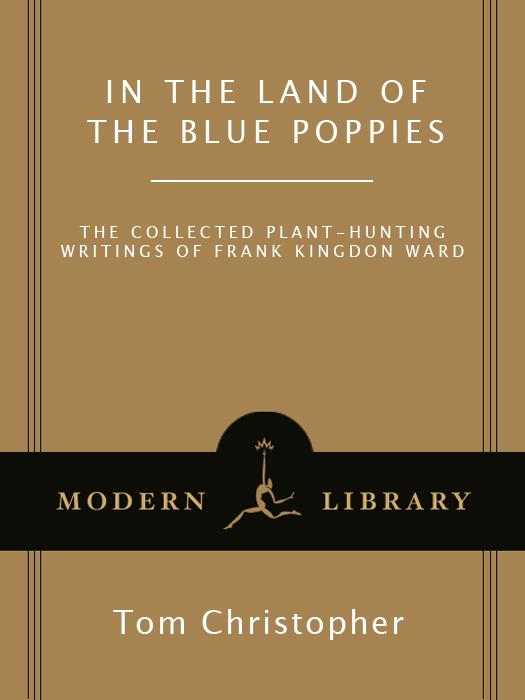All rights reserved under International and Pan-American Copyright Conventions. Published in the United States by Modern Library, an imprint of The Random House Ballantine Publishing Group, a division of Random House, Inc., New York, and simultaneously in Canada by Random House of Canada Limited, Toronto.
M ODERN L IBRARY and the T ORCHBEARER Design are registered trademarks of Random House, Inc.
Maps are reproduced courtesy of the estate of Frank Kingdon Ward and the LuEsther T. Mertz Library of the New York Botanical Garden, Bronx, New York.
C ONTENTS
I NTRODUCTION TO THE M ODERN L IBRARY
G ARDENING S ERIES by Michael Pollan
IN THE LAND OF THE BLUE POPPIES
I NTRODUCTION TO THE M ODERN L IBRARY
G ARDENING S ERIES
Michael Pollan
It took a woodchuck and a book to make me understand whats really at stake in the garden.
Id come to gardening in the nave belief it offered a fairly benign way to kill an afternoon, a refuge from the wider world, but even before the end of my first season Id been forcibly relieved of my innocence. First came the rodent. A series of increasingly desperate measures to run a hungry woodchuck out of my vegetable patch escalated into a personal Vietnam (with me in the role of General Westmoreland, fully prepared to destroy the garden in order to save it), which promptly exploded the whole garden-as-refuge concept. The spectacle of my own rodenticidal rage suggested that more was involved in gardening than tending a few tomatoes and prettifying my yard. It put one into a relationship with nature that was anything but innocent.
But it wasnt until I cracked open Eleanor Pernyis Green Thoughts, a tart, smart, and beautifully written set of alphabetical essays (from Annuals to Womans Place) published in 1981, that I realized how much was really going on here, right under my nose. Pernyi had found in the garden everything from sexual politics and class struggle to culinary fashion and, particularly relevant to me, ecological insight. The garden, in other words, was better approached as an arena than a refuge, an idea I immediately seized on and have yet to let go of. Though I suspect neither party would especially appreciate the tribute, I can trace the discovery of my own vocation as a writer to the crossing, in 1984 or thereabouts, of that particular book with that particular rodent.
What Pernyi had done was to introduce me to an unexpectedly rich, provocative, and frequently uproarious conversation that, metaphorically at least, takes place over the back fence that joins any two gardens in the world. Was there really such a thing as a green thumb? (Nonsense, said Pernyi; why of course! countered Russell Page.) Was I within my rights to firebomb a woodchuck burrow.? (Dont answer.) Must we concede the moral superiority of native species? And why is it magenta is so often maligned? (All too common, huffs Alice Morse Earle, before Louise Beebe Wilder leaps to its defense.) From book to book, across oceans and centuries, the horticultural backing-and-forthing unfolds with such urgency youd be forgiven for thinking the fence of space and time were merely picket. Right away I wanted in on the conversation, and, handed off from one writer to the next, soon made the acquaintance of a crowd of fine and fiercely opinionated talkers. There was Karel apek, a gimlet-eyed Czech who relished the human comedy he found in the garden, and Margery Fish, a gentle Englishwoman whose cottage garden in Somerset told the story of a marriage. Closer to home, there was Katharine White in Maine, reading her January harvest of seed catalogues as a species of literature; Charles Dudley Warner in Hartford, setting himself up as the Mark Twain of American horticulture; and Alice Morse Earle in Massachusetts bringing an almost Jamesian regard to the social swirl of her perennial border. (The peony, Earle wrote, always looks like a well-dressed, well-shod, well-gloved girl of birth, breeding, and of equal good taste and good health; a girl who can swim and hike and play golf.)
Most of these essayists were moonlighting in the garden, which usually meant they were fired with the enthusiasm of the amateur and the liberty of the writer cultivating a piece of ground some distance from literatures main thoroughfares. Their voices could be by turns personal and prescriptive, diffident and prickly, and, somehow, both self-deprecating and incontrovertible at the same time. Since these writers often came to the subject from elsewhere, they were particularly good at drawing unexpected lines of connection between what was going on in their gardens and the seemingly distant realms of politics, art, sex, class, even morality. I discovered that as soon as one got past the how-to volumes written by experts, and the illustrated coffee-table tomes of garden porn, the garden bookshelf brimmed with the sort of quirky, sui generis writing often produced by a good mind operating in a small space.
And so I read to garden, and gardened to read, counting myself lucky for having stumbled on a sideline with such a lively and lasting literature. For what other pastime has spawned so many fine books? Only fly-fishing comes even close. (Numismatics? Woodworking? Macram? Come on!) Which is probably no accident: for gardening, like angling, engages us with the natural world, as actors rather than passive spectators. Both put us smack on the frontier between nature and culture, which is always an interesting place for a writer to stand. And both literary traditions pose practical and philosophical questions about how we might better go about rhyming our desires with natures ways, questions that only grow more urgent with time.
The books Ive chosen for this series are the classics that form the backbone of this tradition. What you wont find on this particular shelf are reference works and strictly how-to books; theres plenty of how-to here, but the emphasis is more along the line of how-to-think-about-it than how-to-do-it. Even the oldest among them will be contemporary in the best sense, offering a still-vibrant voice in the back-fence conversation gardeners have been conducting at least since the time of Pliny. Im not sure whether or not we should be surprised by this, but a great many of the issues that engaged Pliny are the same ones that centuries later would engage Alexander Pope and Vita Sackville-West, Gertrude Jekyll and Eleanor Pernyi, Charles Dudley Warner and Karel apek, and will no doubt engage gardeners centuries hence. Im thinking of the power of plants to change us in mind and body, the gratuitous beauty of a flower, the moral lessons of the pest, the ancient language of landscape design, and the endlessly engrossing ways that cultivating a garden attaches a body to the earth.



